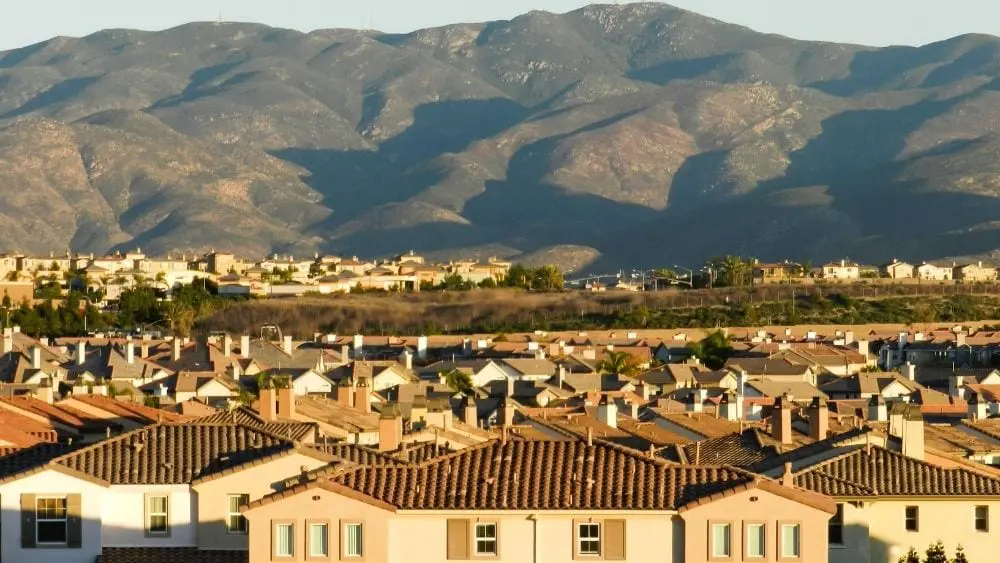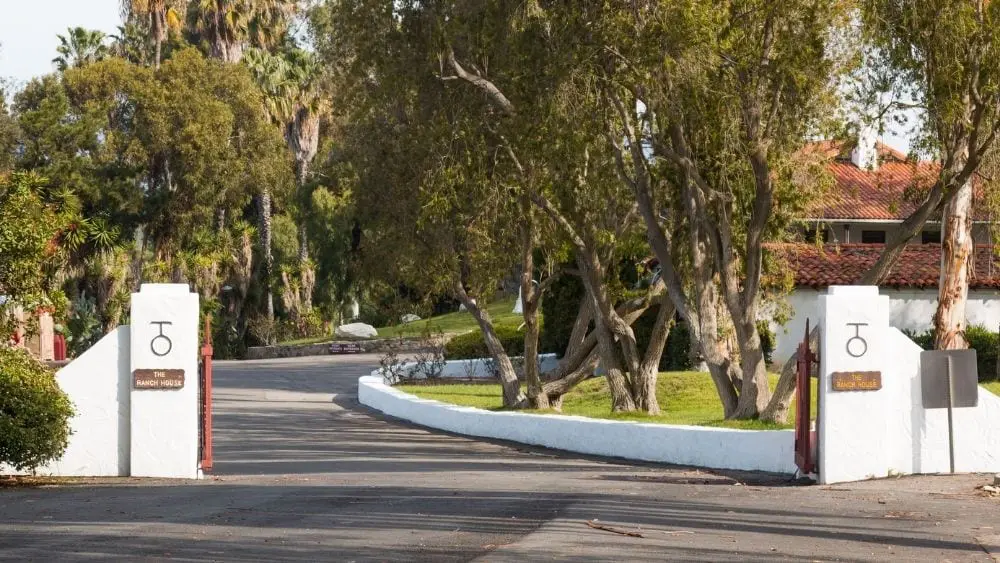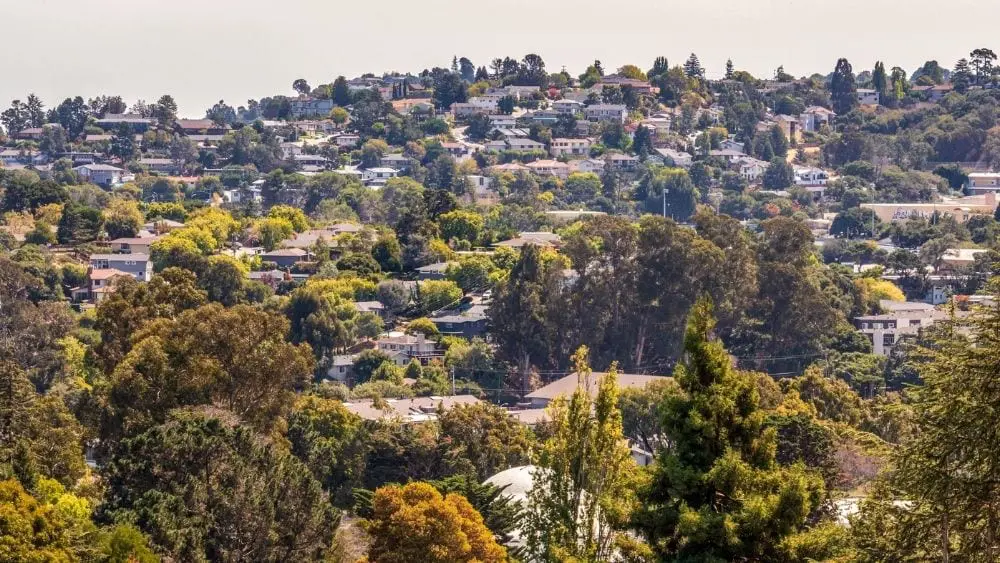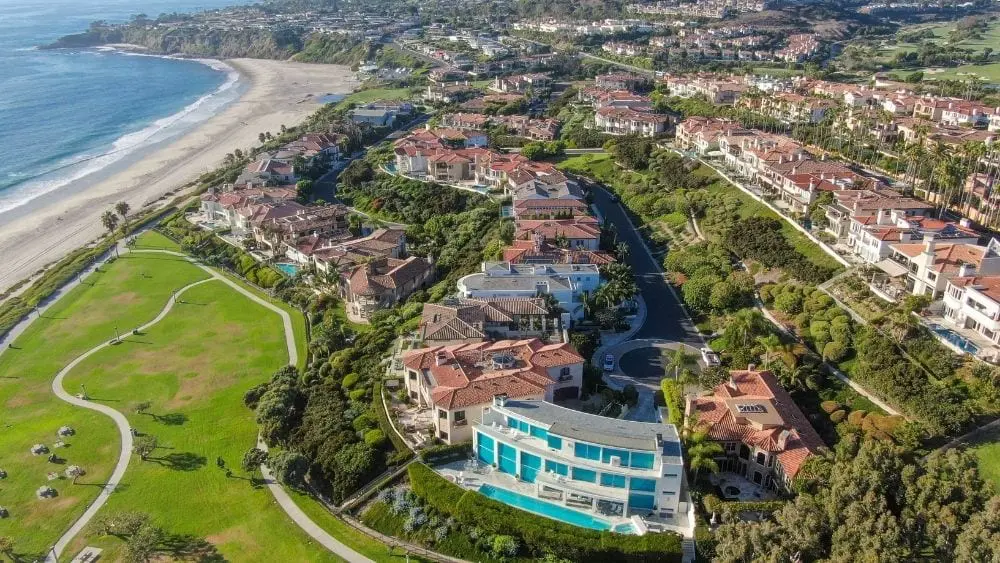
California has long held an allure like almost no other state in the U.S. People dream of living by the Pacific Ocean, in the desert or in the mountains to enjoy year-round sunshine and a healthy outdoor lifestyle. But all that physical beauty comes at a premium. The average cost to build a house in California is the second highest in the nation, according to GoBankingRates, with only Hawaii having higher costs to build a home.
More than 39 million people live in California, which stretches for 900 miles along the Pacific coastline from Mexico to Oregon. The state’s popularity means land prices are high and housing costs even higher, particularly in populous cities such as Los Angeles, San Francisco, San Jose, and San Diego, which frequently top the lists of most expensive places to live.
California also has extensive regulations for new construction to increase energy efficiency, such as a requirement for most newly built homes to have solar panels. In addition, all newly built homes in the state must meet net-zero standards, which means they produce as much energy as they use. To do this, homes need to be built with extra insulation and airtight construction as well as have highly energy-efficient appliances and systems. While building a home in this way reduces operating costs, it can increase the initial cost of construction.
The cost to build a house in California includes a wide range of prices because the state is so large and has a variety of housing markets. According to HomeAdvisor, building a house there typically runs from $194,500 to $580,500 with an overall average of $387,500. But depending on where you build your home and the size and style, you could pay from as little as $104,000 to more than $1 million.
Custom vs. Production Homes

When you plan to build a new home in California, it’s important to clarify whether you are thinking about a custom home or what’s called a “production” home. A custom home, which you can build on your own land or on a lot owned by a builder, usually requires you to hire an architect or a design/build company. Financing a custom home requires a construction loan and a permanent loan unless you’re paying cash. The cost to build a custom home in California varies widely according to land prices and your decisions about the house.
In this article, we’re discussing how to build a production home, which is usually one of a group of homes in a community. The cost of the land and construction is included in the price of the home, although sometimes you’ll pay an extra fee for a specific lot if it’s more desirable than others in the community. Depending on the builder, you’ll have a choice of personalization or a package of choices for finishes and fixtures.
Step-by-Step Process to Build a House in California
Building a home in California takes an average of seven months, but it can take more or less time depending on a variety of factors including your home’s size and style, the availability of labor and materials, and even the weather. The following steps are required to get from contract to completion on your new California home.
1. Determine the budget for your new home

Your first step when building a home in California is to get preapproved for a loan. You can talk with your own lender to get a sense of your price range, but once you’ve chosen a builder, you may want to work with the builder’s in-house or preferred lender to streamline the process. While costs vary by location, the average size of a home in California is 1,625 square feet, with an average price per square foot of $240, according to HomeAdvisor. The price per square foot depends on the quality of construction and finishes and can range from as low as $85 to as much as $445 per square foot.
No matter where you are building a home, the main costs are the land, labor, and materials. Permitting costs and inspections also add expenses to the process and are wrapped into the total price of the home by the builder.
Materials account for approximately 50 percent of the cost to build a home in California. Lumber for the frame costs $3 to $6 per square foot in California, according to HomeAdvisor. Framing costs average $2,120 to $8,650, but that varies according to fluctuating lumber prices. While lumber costs can be somewhat lower in California due to its proximity to sources in Oregon and Washington, other costs can be higher in the state. Insulation costs are typically around $0.20 to $2.00 per square foot. Roofing materials add $1 to $20 per square foot to materials costs, and concrete costs $4 to $6 per square foot. Siding costs range broadly from $2 to $50 per square foot in the state. California houses typically don’t have a basement and are built on a slab foundation, which can cost from $1,300 to $14,280.
You can spend more or save some money depending on the choices you make for interior finishes. For example, flooring can range from $9 to $32 per square foot.
Labor costs include a variety of contractors from the construction manager to subcontractors such as plumbers, electricians, and roofers. Landscaping adds an average of $6,750 to newly-built California homes.
While the cost of buying land is included by your builder when you build a production home, you may pay a premium for some lots. Land prices vary widely in California from $50,000 to more than $1 million depending on the size and location of the lot, according to HomeAdvisor. The average lot statewide costs $150,000.
California is known for having extensive permit requirements that can add to the time it takes to build there. The average cost of permits for newly built homes in the state is $8,000, which will be wrapped into the price of your new home. The mandate for solar panels adds approximately $8,500 to the cost of your home. Depending on the builder, you may pay for that separately or have it included in your mortgage. Some communities will have a solar panel array that serves the community rather than one on each home.
Don’t forget to budget for homeowner’s insurance, homeowner’s association (HOA) fees, and property taxes for your new California home. Insurance rates are the second-lowest in the country in California at an average of $1,166 per year, according to Insurance.com, compared to the national average of $2,305. HOA dues vary according to your location and community amenities. Californians pay an average of $3,800 in annual property taxes with a typical rate of 0.71 percent.
You’ll also need cash for closing costs, which vary by jurisdiction and average 2 percent to 5 percent of the purchase price of the house.
2. Choose your builder

The builder you choose for your home will have a big impact on the cost to build your home in California and your experience with your new home. You can narrow your choice of builders by researching communities and neighborhoods where you want to live and looking at models online and in person. You can ask neighbors about their satisfaction with the builder, look at communities previously built by that builder and check out reviews on a builder at TrustBuilder®.
3. Line up your financing
Most builders have a list of preferred lenders they trust. Some larger builders have an in-house mortgage financing business. Either way, you’re likely to benefit from working with that lender because they have an interest in satisfying both you and the builder to complete your loan. You may want to consult another lender just to compare rates and fees, so you are confident you are getting a good deal on your loan. Some builders offer an incentive to use their preferred lender and title company for your financing and closing, such as paying closing costs.
Your builder will tell you how much of a deposit is required when you sign the initial contract, which can be a few thousand dollars or as much as 10 percent of the home’s final price. Many builders offer an allowance for optional choices within the price of the home. In other cases, you may need to pay cash for options that go beyond the typical homes in the neighborhood.
You may also want to investigate options for down payment assistance or other homebuyer incentive programs in your area, including those geared toward first-time buyers. California has numerous state and local programs that you can find by searching DownPaymentResource.com.

4. Choose your lot and floor plan
The sales professionals at a new community are the experts about the advantages of the various lots and floor plans, and your ability to build the house you want on any specific lot. Not every floor plan can be built on every lot, either because of space considerations or for the aesthetics of the community.
Ask about plans for the community so you know what to expect on the surrounding land. You don’t want to choose a lot based on a view that may disappear as more homes are built in future years. Be sure to ask about lot premiums so you can include that cost in your financing.
5. Consider the local climate
One reason for California’s popularity is its temperate climate, but most people are also aware of issues with wildfires, earthquakes, intense rain, and mudslides that occasionally impact different parts of the state. You can ask your builder about potentially choosing specific design elements or materials that can make your home more resilient to some of these issues. The Buyers Guide to Resilient Homes also has useful information for homebuyers and homeowners.
6. Be aware of permitting and inspections
Your builder will handle all the permitting requirements and inspections, but you should be aware that these steps can add to the time it takes to build your home in California. Many jurisdictions have special additional inspections such as for fire safety that your builder will schedule. You can also hire an independent home inspector if you want another inspection of your builder’s work. You’ll need to consult your builder about the appropriate time to schedule an outside inspection, so you don’t interfere with the construction of your home or other inspections.
Overall Build Timeline

While the average time to build a house in California is seven months, as mentioned earlier, the total time to build your specific home will depend on certain key factors: availability of materials and labor, weather conditions, and the size and location of your home — plus, how long it takes for permits to be issued. Your builder may already have some permits in place, but specific permits will be needed once you choose your lot and floor plan. Once the permitting is approved and construction begins, it can take from 90 to 150 days for your home to be completed.

Michele Lerner is an award-winning freelance writer, editor and author who has been writing about real estate, personal finance and business topics for more than two decades.
 How to Build a House in Georgia
How to Build a House in Georgia
Geneva
When considering homes for sale in the city of Merced, it’s strongly recommended that you follow the guidelines tailored to UC Merced housing. Prioritize proximity to the university, amenities, and growth potential. Partner with experts knowledgeable about California housing trends. Evaluate energy efficiency, modern features, and potential resale value. Thoroughly research local market trends and consider long-term investment potential. By adhering to these guidelines, you’ll find your California dream home that with your unique lifestyle needs